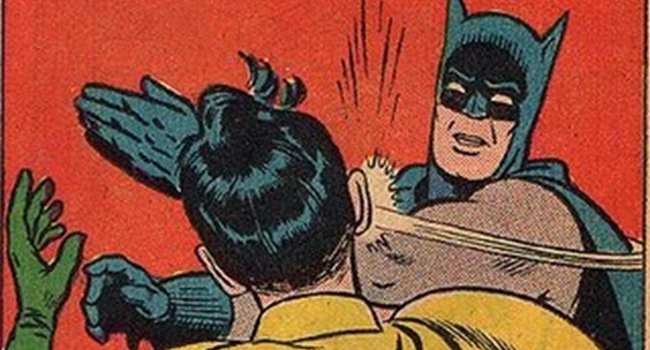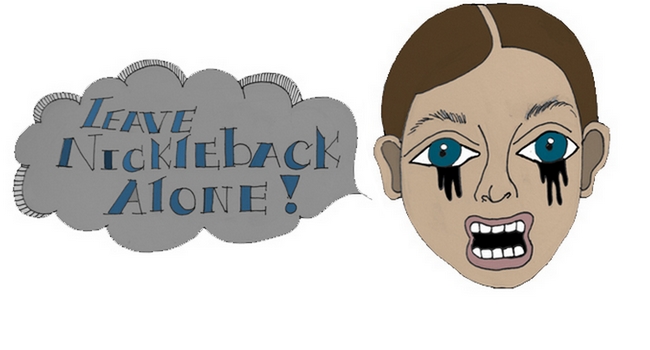Over a lilting reggae rhythm and despite a distant stream of sirens, Rihanna recounts a lengthy narrative laced with regret and despair, a tale of how she “just shot a man down.” In “Man Down,” she (or the character she is playing) makes it clear she “didn’t mean to end his life,” knows “it wasn’t right” and says she “can’t even sleep at night.” But is her regret due to a genuine feeling of remorse and moral qualms or is she more concerned with needing to get “out of sight,” before she ends up “behind bars?” The emotion conveyed in her delivery does make it clear that she regrets having shot the “man down” but the next lines seem to trivialize the events that led to her killing a man:
“What started out as a simple altercation/Turned into a real sticky situation/Me just thinking on the time that I’m facing/Makes me wanna cry.”
There she goes again, crying because of her concern for the length of her prison sentence! Of course, in the next lines she redeems herself by hastily adding “’Cause I didn’t mean to hurt him/[He] Coulda been somebody’s son/And I took his heart/When I pulled out that gun.” A few rum-bum-bums and oh-mama-mamas later she says she “Just shot a man down/In Central Station/In front of a big ol’ crowd/Oh why, oh why?” Now—is she wondering why she shot the man, or is she wondering why she did it in front of so many witnesses? Does she regret the crime, or the prospect of doing the time? The narrative is unclear, and perhaps the ambiguity is deliberate.
What’s missing from the song at this point is a real context—did she shoot this man “just to watch him die” as Johnny Cash once sang? What was this “simple altercation” that turned into a “real sticky situation?” The only clue comes in the verse that Rihanna is waxing rhapsodic about her weapon of choice, a .22 she calls “Peggy Sue”: “What do you expect me to do/If you’re playing me for a fool/I will lose my cool/And reach for my fire arm.”
But playing someone for a fool doesn’t justify shooting a “Man Down,” unless you’re a member of N.W.A., and the lyrics don’t get any more specific than that. As the verses progress, Rihanna (or her character, rather), plans on leaving town, but instead gets taken “downtown” and then she comes to the realization that she is a criminal and pleads with the judge for a minimal sentence. Again, her guilt is never in doubt, but she still believes that whatever the “extenuating circumstances” were, they should be taken into consideration when determining her punishment.
The video for the song makes “the trigger” for Rihanna’s violent revenge abundantly clear, and director Anthony Mandler was right when he told MTV News in May that it would “flip people’s minds.” In published reports that followed the premiere of “Man Down” on BET, most news outlets indicated that the video begins with Rihanna shooting her rapist in the head, but that does oversimplify the introduction, if only a little. The video opens by showing a crowd of people walking through a courtyard in a Jamaican train station. It’s a bright sunlit day, and the heat and humidity is palpable—it might be early in the morning at Central Station, it’s hard to tell. The viewer sees Rihanna standing to the side, just barely emerging from the darkness on the fringes. The Jamaican people are traversing the open space in the middle. Rihanna raises her .22 from her side and points it into the crowd. The bang of a shot from the gun is heard, and a man in the center of the square goes down in slow motion. The other men, women and children in the area scatter willy-nilly in the ensuing chaos, leaving one man in a pool of his own blood.
Now it’s time for a reality check—the elephant in this room is the fact that Rihanna was famously a battered woman herself. Pop singer and R&B star Chris Brown, her boyfriend at the time, allegedly hit her on at least one occasion that resulted in his arrest and prosecution. So, it would seem that she is a good messenger for this message, whatever it is. However, she is merely a messenger, for like most pop stars today, she didn’t write the song herself, it was written by a team of the usual pop suspects, including producer Shama “Sham” Joseph, Timothy Thomas, Theron Thomas and Shontelle Layne. So to claim the song and the video are “about” her experience with Chris Brown is far from correct, although one can’t help but suspect that her experience at least informed her perspective, even if the revenge she took proved to be in her fantasy world. But again, that’s just speculation.
What’s been missed about the current “controversy” is that the video is much less objectionable than the song itself. At least in the video there is an explanation of what caused her to shoot this man.
In the song itself, we hear the “who” and the “what” but we never learn the “why”—why she pulled “the trigger, pull the trigger BOOM/And end a ni**a end a ni**a’s life so soon.” Without the context in place of the video, the song is morally indefensible. But did the media and critics raise such a ruckus when Bob Marley, and later Eric Clapton, sang “I Shot the Sheriff?” No they didn’t, and they should recognize “Man Down” for what it is—a cautionary tale with a weighty moral and with no winners in the end. Rihanna was right when she told BET in a later interview that the video is “art with a message,” and she and Mandler should be applauded for addressing these issues and making the art form of music video relevant and important again.



